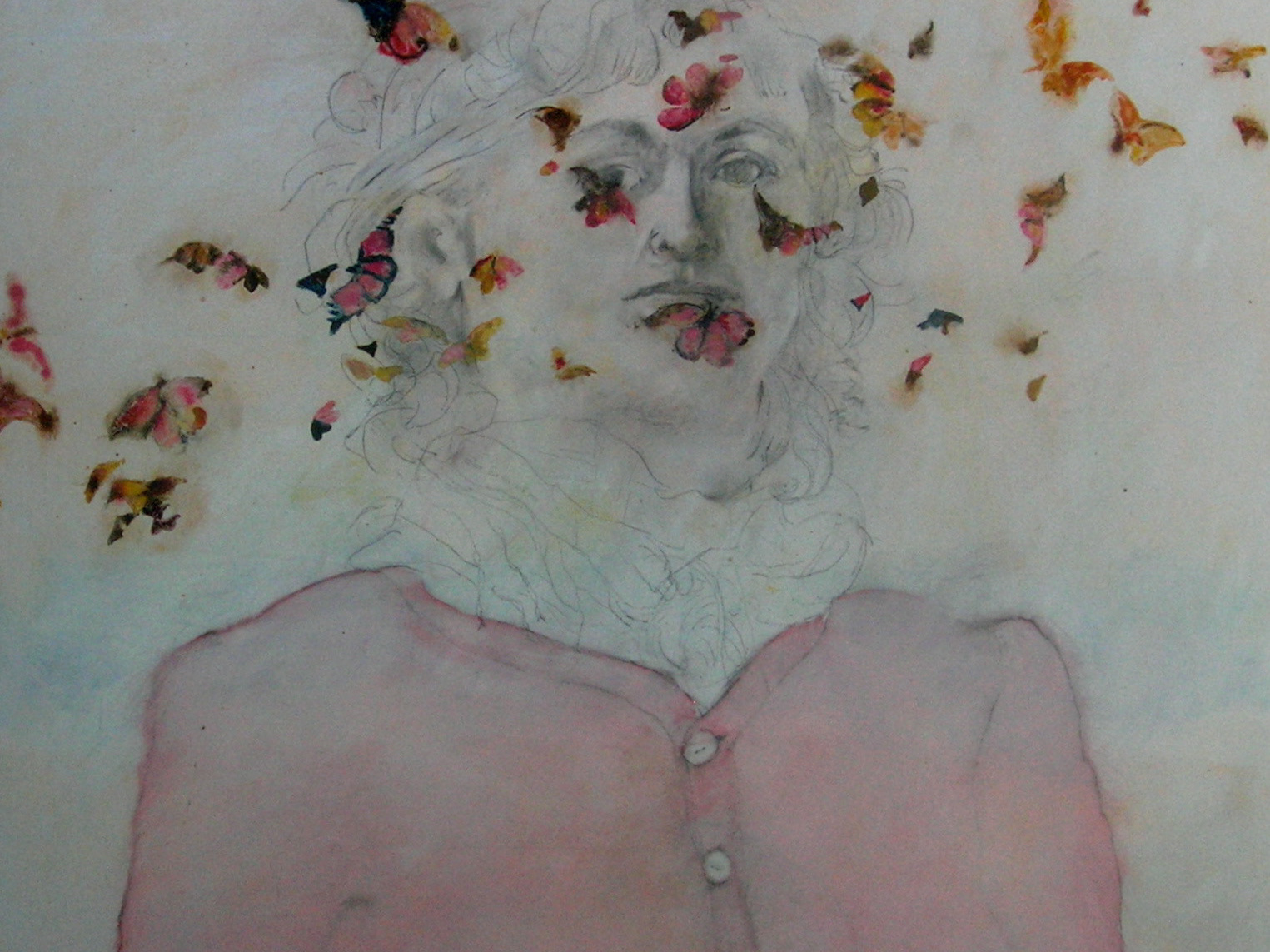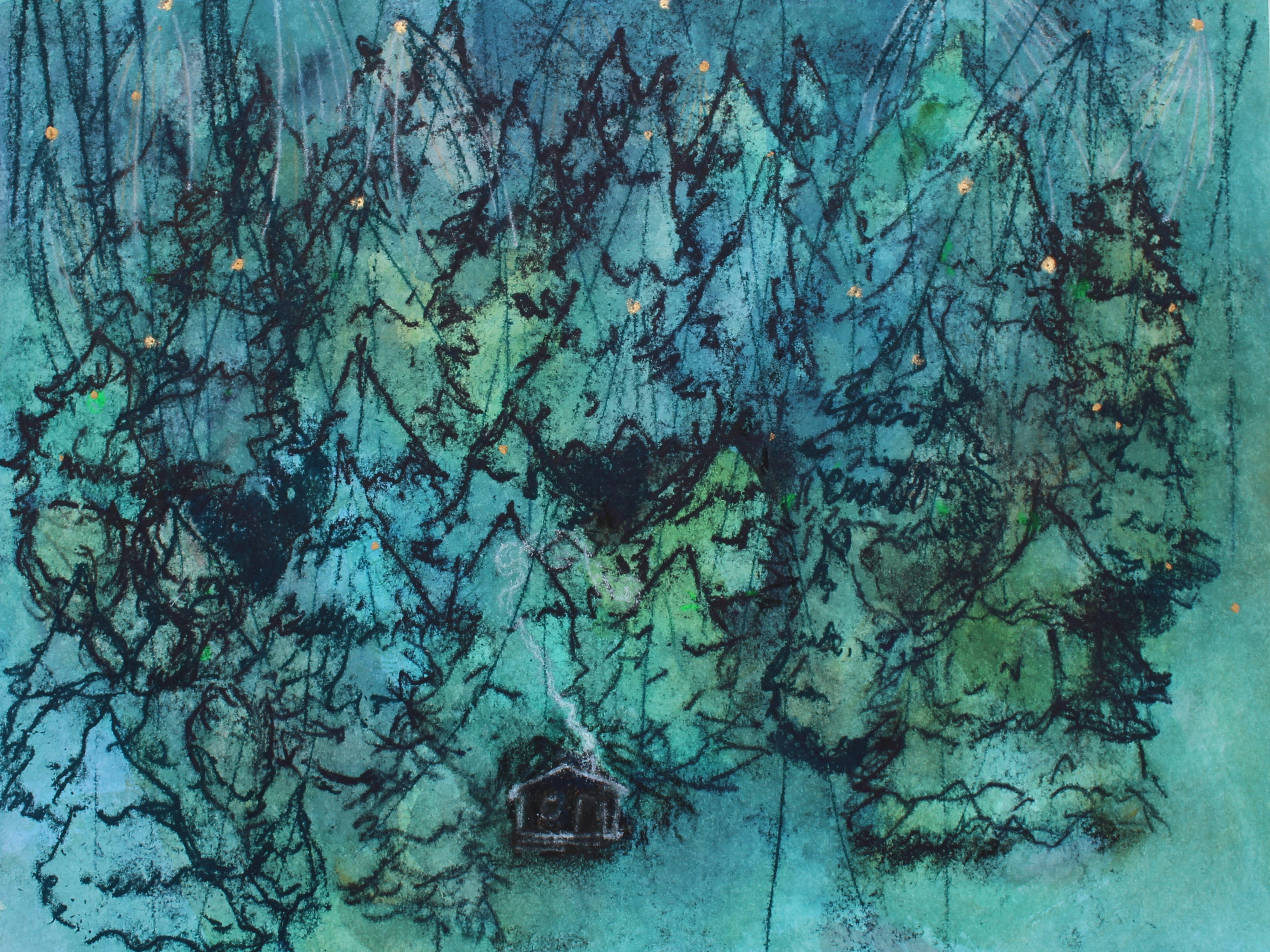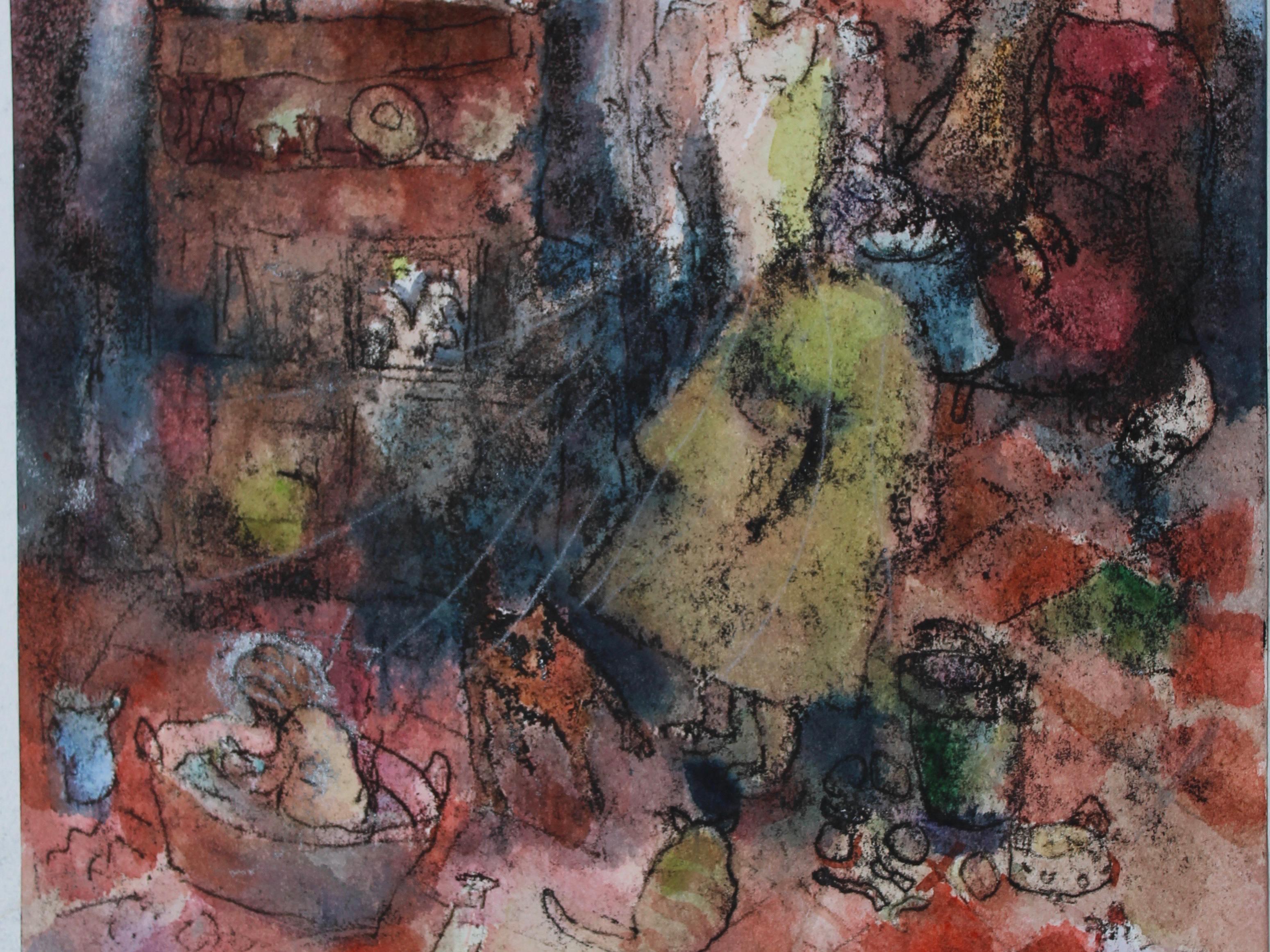
pool 53x53 cm

let go 55x55

generate 71x71

courage50x53

beyond 54x56

opening

open eyes open heart 54x58cm

settle

standing upright

sun burst 68x68
The Squares
Beginnings ¦ Medium ¦ Form
I had become very tired of working in oils. Somehow I felt trapped by the material. Nonetheless, it took some time to decide to put oils aside and start working in watercolour. I wanted, too to no longer be bound by representation. I wanted to eschew ‘composition’. I wanted to be free from ideas and to work with colour, with paint, in a straightforward way.
To provide the form for this work, I chose squares. A square is stable and down-to-earth. It has few connotations – as opposed to a circle or a triangle.
I started working small – my first square was 12 cm wide. And in creating it, I felt the peace and absorption I had hoped for. With time I have scaled up – as far as 100 x 100 cm, using large flat goats-hair brushes and buckets of water.
Materials ¦ Process
I’m using a very good quality wall lining paper. So far it is better for what I’m doing than watercolour paper– that is, for the amount of wetting and working it takes. It doesn’t cockle or pill easily.
The process is rhythmic – wetting, painting, drying, looking, re-wetting etc. I have several pieces on the go. I work flat (obviously) on boards that I shift about for drying.
It is important that my art practice has minimal impact on the environment and I am very pleased to have found a way of working with minimal waste, as well as simplicity of process. There is no pretence: just paint on paper. It is respectful of materials, environment, self and viewer.
Developments
Self-containment
My aim is to create work that is secure in its own identity. It is complete and self-contained and the viewer – I hope – might feel some of this calm and confidence, like looking in a mirror that is reflecting back their solid self. A painting doesn’t change the way a person does (although it changes in different lights and at different times of day).
Thus, I no longer “compose” a painting (a surprise to me, and unnerving – “It must be a relief,” my husband Phil told me). Instead, it’s all about how the painting gives of itself, how it embraces the viewer. It is a full frontal facsimile, like a print – a transfer – from me to the paper.
At the same time, these paintings have detached themselves from usefulness, busy-ness and meaning (like a bit of wall). It has occurred to me that they could be an expression of my habit of gazing (blankly or intensely) at a phenomenon if I’m in a situation where I’m not at ease. It also corresponds to the painter’s habit of looking and analysing, wondering how would I paint this? (eg, this corner of the room), what colours would I use? It is a way of looking at something without seeing its identity, function, history or importance.
Phil and I look at the work together and share our responses and thoughts. We look at them in different spaces and lights. Sometimes he helps me step back from my creation to know if it is fully realised or not.
Claire Rollinson


